In Nebraska, the skies and woodlands are alive with the rhythmic percussion of woodpeckers, a testament to the state’s rich avian diversity.
As we delve into the tapestry of Nebraska’s natural landscapes, we encounter a fascinating array of woodpecker species, each with its unique characteristics and ecological significance.
From the industrious Downy Woodpecker to the striking Red-headed and the elusive Black-backed, these avian residents carve their niches in the intricate ecosystems of the Cornhusker State.
This exploration of 12 Woodpeckers in Nebraska invites us to witness the vibrant plumage, distinct behaviors, and crucial roles these birds play in the delicate balance of nature.
Journey with us as we unveil the stories of these winged percussionists, shedding light on their lives, and the enchanting symphony they collectively compose in the heart of Nebraska’s wilderness. So, stay focused.
12 Woodpeckers in Nebraska
Check out the diverse woodpecker species that grace Nebraska’s landscapes.
From the vibrant Downy Woodpecker to the striking Black-backed Woodpecker, each species brings unique characteristics, behaviors, and ecological roles to the state’s avian tapestry.
Explore the rich world of Nebraska’s woodpeckers through this informative list.
1. Downy Woodpecker

- Scientific name: Picoides pubescens
- Size: 6-7 inches
- Weight: 1-1.3 ounces
- Food: Insects, especially beetles and ants, also seeds and berries
- Population: Common and widespread
- Life span: Up to 11 years
- Status: Stable
The Downy Woodpecker, Nebraska’s smallest woodpecker, thrives in various habitats such as woodlands and suburban areas.
Recognizable by its black and white plumage, the Downy Woodpecker’s drumming and high-pitched calls are distinctive.
This agile bird effortlessly navigates tree trunks and branches, foraging for insects hidden in the bark. Despite its small size, the Downy is a hardy and adaptable species, often visiting backyard feeders for seeds and suet.
Its ability to coexist with humans contributes to its stable population, making it a common and delightful sight for birdwatchers.
2. Red-bellied Woodpecker
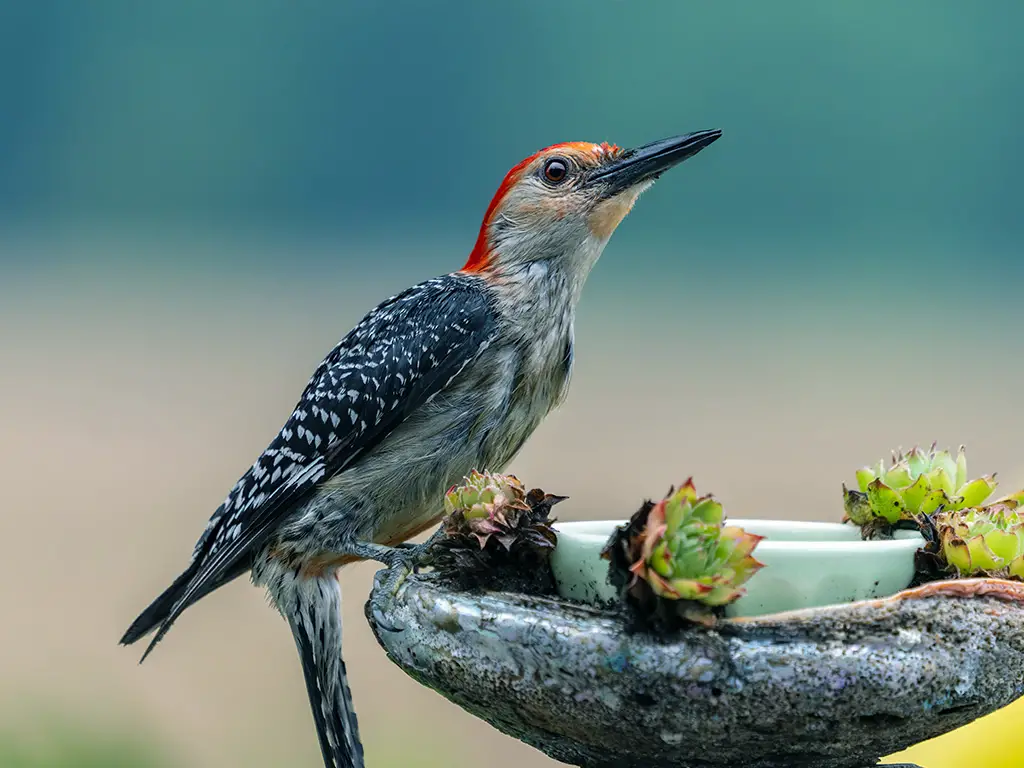
- Scientific name: Melanerpes carolinus
- Size: 9-10.5 inches
- Weight: 2-3 ounces
- Food: Insects, fruits, nuts, and seeds
- Population: Increasing in some regions
- Life span: Up to 15 years
- Status: Least concern
Named for a faint red wash on its belly, the Red-bellied Woodpecker is a striking species in Nebraska.
Thriving in woodlands, it’s an adept forager, using its long tongue to extract insects from tree crevices. This woodpecker’s adaptable diet, including fruits and nuts, contributes to its resilience.
Urbanization and cavity-nesting opportunities in dead trees or nest boxes have led to a population increase in some areas, making it a common and vibrant part of Nebraska’s birdlife.
3. Red-headed Woodpecker
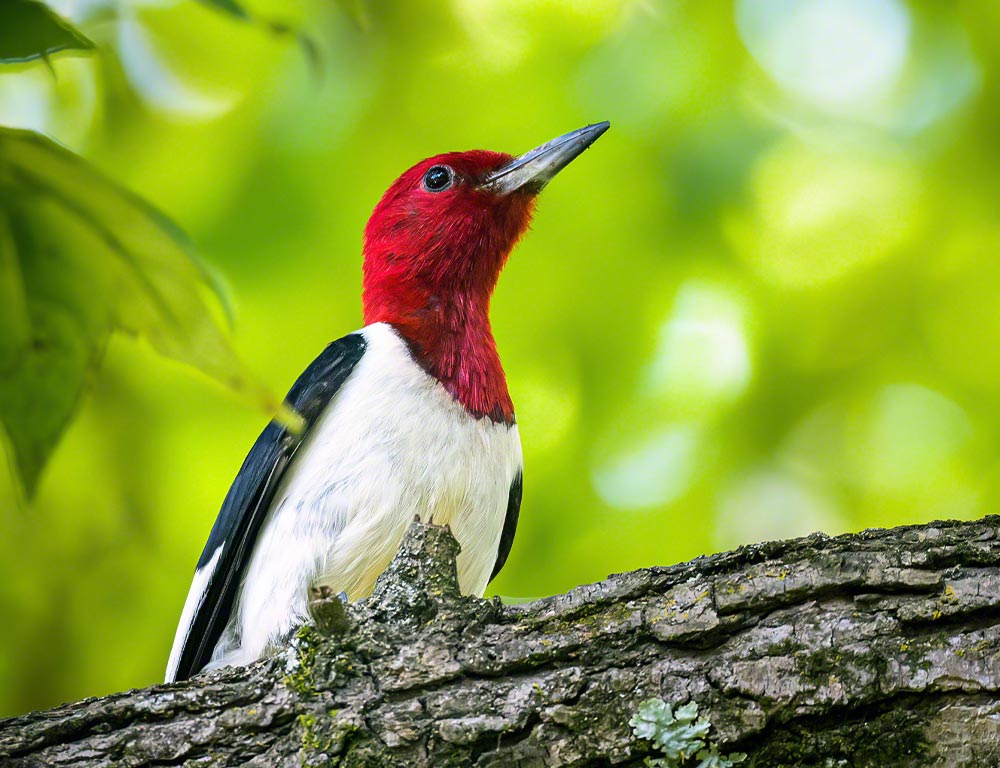
- Scientific name: Melanerpes erythrocephalus
- Size: 7.5-9.25 inches
- Weight: 2-3.4 ounces
- Food: Insects, fruits, nuts, and seeds
- Population: Declining in some regions
- Life span: Up to 9 years
- Status: Near Threatened
Distinguished by its entirely red head, the Red-headed Woodpecker is a striking presence in Nebraska. Preferring open habitats with dead trees for nesting, it’s a proficient catcher of insects on the wing.
Unfortunately, habitat loss and competition for nesting sites have led to a decline in some areas, warranting conservation attention.
Conservation efforts targeting habitat preservation can ensure the continued presence of this vibrant species in Nebraska’s ecosystems.
4. Pileated Woodpecker
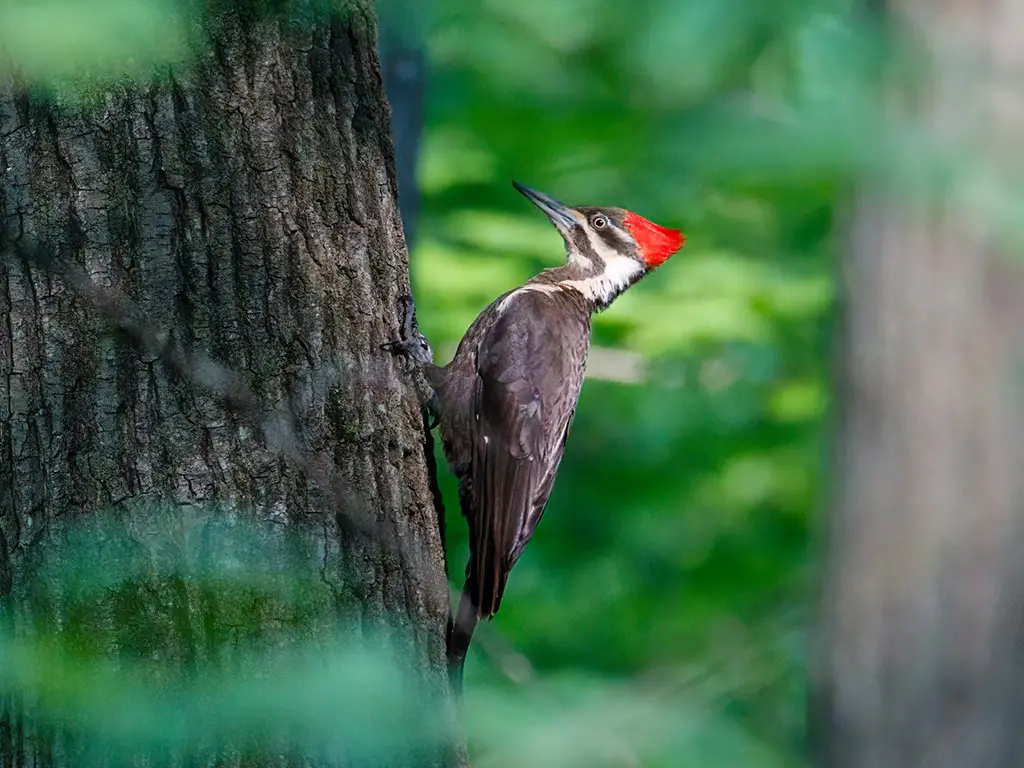
- Scientific name: Dryocopus pileatus
- Size: 16-19 inches
- Weight: 8-12 ounces
- Food: Insects, especially carpenter ants, and fruits
- Population: Stable
- Life span: Up to 12 years
- Status: Least concern
The Pileated Woodpecker, Nebraska’s largest woodpecker, is an impressive sight with its striking red crest and bold black and white plumage.
Inhabiting mature forests, this species is an expert at excavating large cavities in trees, benefiting other cavity-nesting species after it moves on.
Its distinctive drumming and loud calls resonate through the woods, marking its territory.
With a stable population, the Pileated Woodpecker is a testament to the resilience of Nebraska’s woodpecker community, contributing to the state’s diverse avian tapestry.
5. Northern Flicker
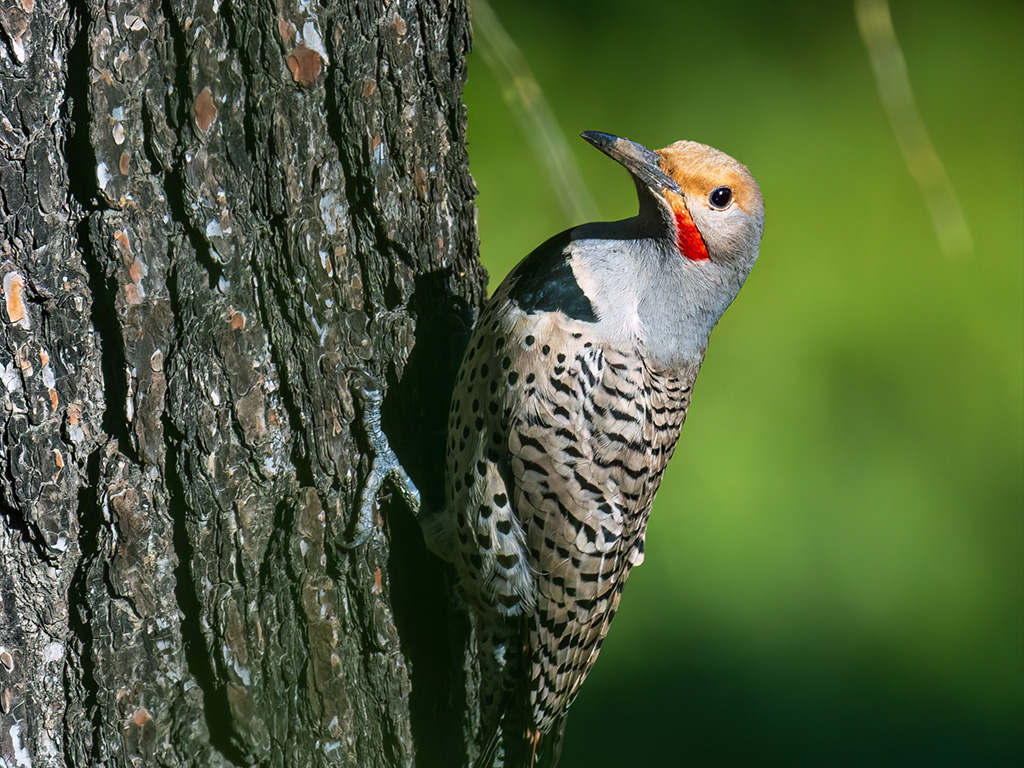
- Scientific name: Colaptes auratus
- Size: 11-14 inches
- Weight: 3-5 ounces
- Food: Ants, beetles, seeds, and fruits
- Population: Stable
- Life span: Up to 9 years
- Status: Least concern
With its distinctive spotted plumage and a flash of bright red under its wings in flight, the Northern Flicker is a charismatic woodpecker species in Nebraska.
Found in open woodlands and urban areas, this ground-feeding woodpecker utilizes its strong bill to extract ants and other insects from the soil. Equipped with a barbed tongue, it’s also proficient at consuming fruits and seeds.
The Northern Flicker’s versatility in both habitat and diet contributes to its stable population, making it a common and welcomed presence in the state.
6. Yellow-bellied Sapsucker
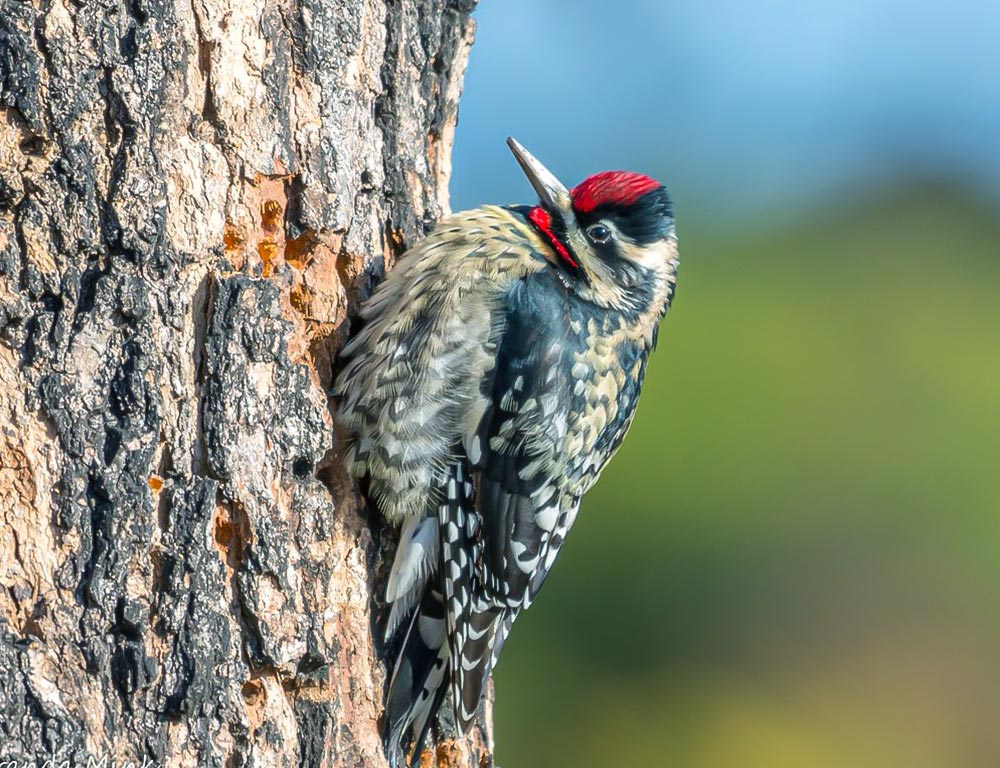
- Scientific name: Sphyrapicus varius
- Size: 7.5-8.5 inches
- Weight: 1.5-2.4 ounces
- Food: Sap, insects, and tree fruit
- Population: Stable
- Life span: Up to 9 years
- Status: Least concern
Easily identified by its black and white plumage and, as the name suggests, a yellowish wash on its belly, the Yellow-bellied Sapsucker is a migratory woodpecker species in Nebraska.
Thriving in both deciduous and coniferous forests, this bird drills rows of sap wells in trees and returns later to feed on the sap and any trapped insects.
Its unique feeding behavior and migratory habits contribute to its ecological role, making it a fascinating component of Nebraska’s birdlife.
7. Lewis’s Woodpecker
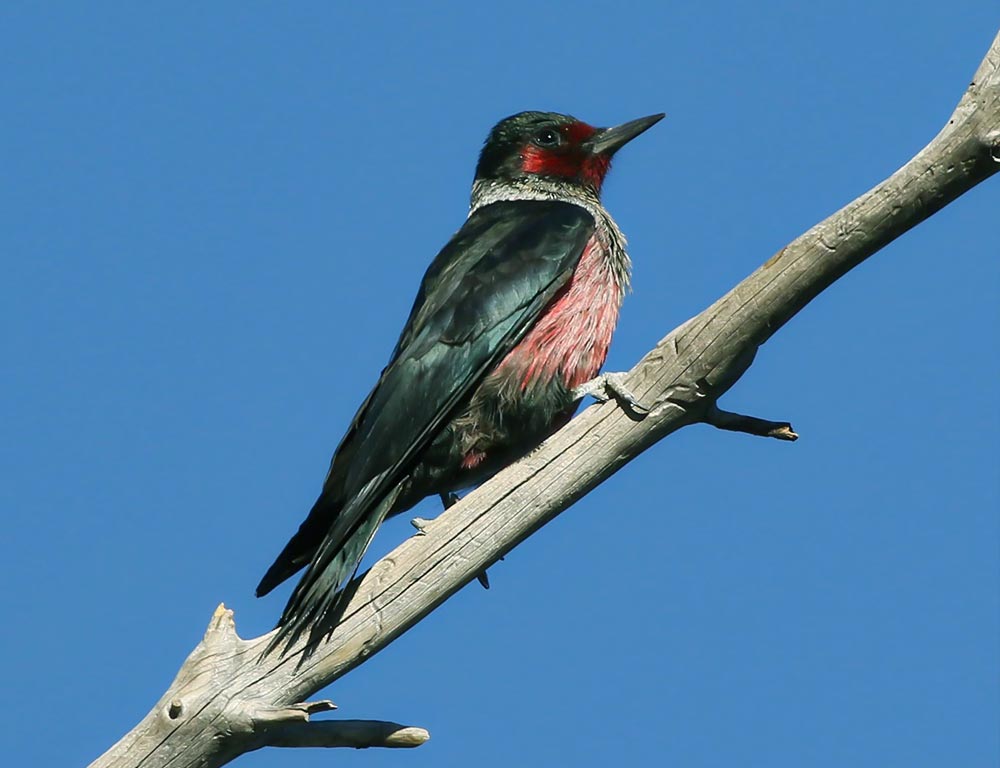
- Scientific name: Melanerpes lewis
- Size: 10-11 inches
- Weight: 4-7 ounces
- Food: Flying insects, acorns, and berries
- Population: Decreasing in some regions
- Life span: Up to 11 years
- Status: Near Threatened
Named after Meriwether Lewis, this distinctive woodpecker with a dark red face and greenish-black plumage is a unique sight in Nebraska.
Often found in open woodlands and burned areas, Lewis’s Woodpecker catches flying insects in acrobatic flight.
Unfortunately, habitat loss, fire suppression, and competition for nesting sites have led to a decline in some regions, emphasizing the importance of conservation efforts to protect this remarkable species in Nebraska.
8. Red-naped Sapsucker
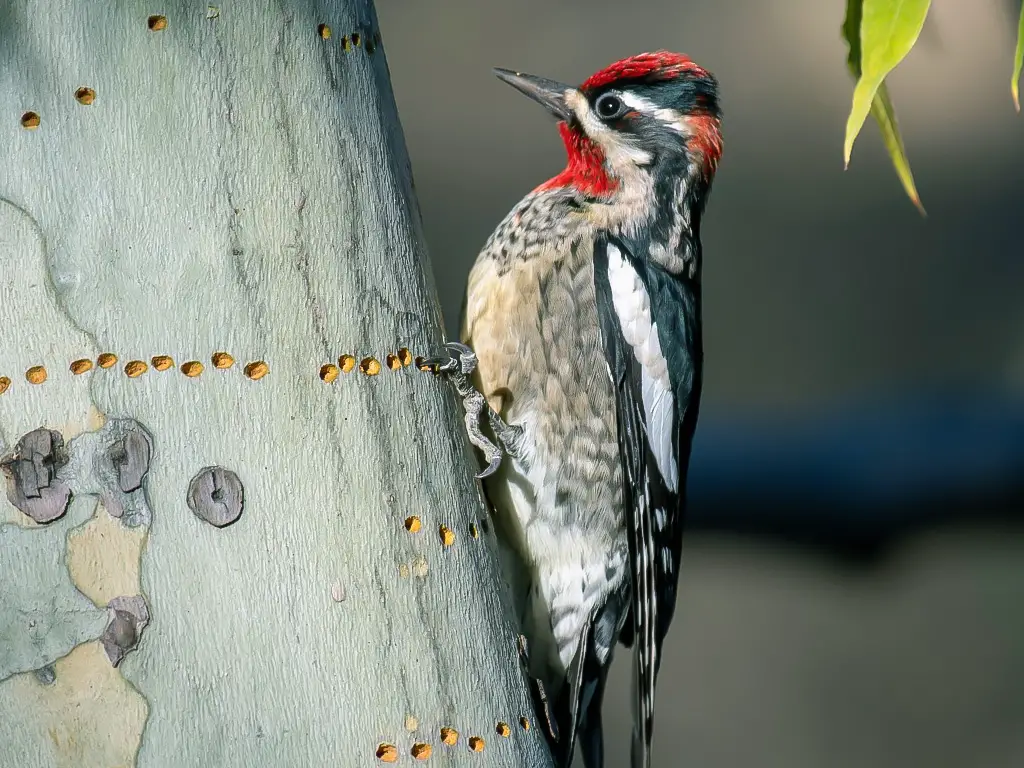
- Scientific name: Sphyrapicus nuchalis
- Size: 7-8 inches
- Weight: 1.5-2.4 ounces
- Food: Sap, insects, and tree fruit
- Population: Stable
- Life span: Up to 9 years
- Status: Least concern
A close relative of the Yellow-bellied Sapsucker, the Red-naped Sapsucker is identifiable by a red patch on the back of its neck.
This migratory woodpecker is found in various forest types, using its specialized tongue to extract sap and insects from trees.
Like its cousin, it contributes to the ecological balance by creating sap wells that benefit other species.
With a stable population, the Red-naped Sapsucker is a fascinating and welcomed member of Nebraska’s diverse woodpecker community.
9. Williamson’s Sapsucker
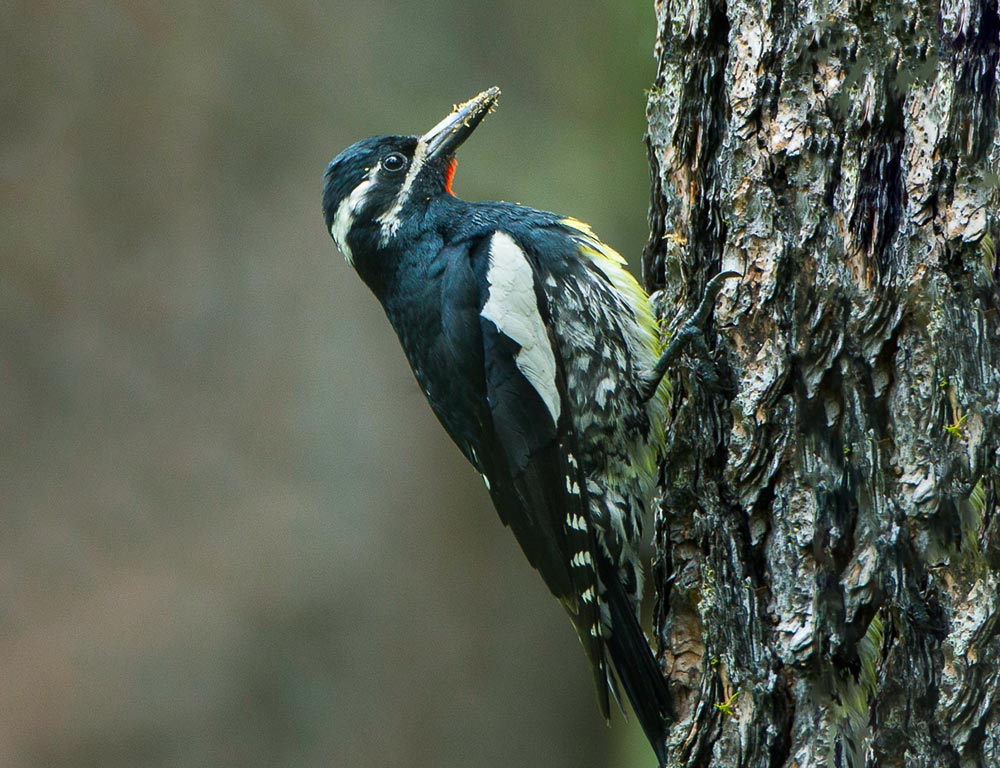
- Scientific name: Sphyrapicus thyroideus
- Size: 8-9 inches
- Weight: 1.5-3 ounces
- Food: Insects, sap, and berries
- Population: Decreasing in some regions
- Life span: Up to 9 years
- Status: Near Threatened
Distinguished by its black and white plumage and red throat patch (males), Williamson’s Sapsucker is a captivating woodpecker in Nebraska.
This species primarily inhabits coniferous forests, where it drills sap wells in trees and catches insects.
Unfortunately, habitat loss and changes in forest management have led to a decline in some areas, emphasizing the need for conservation measures to protect this unique woodpecker in Nebraska.
10. American Three-toed Woodpecker
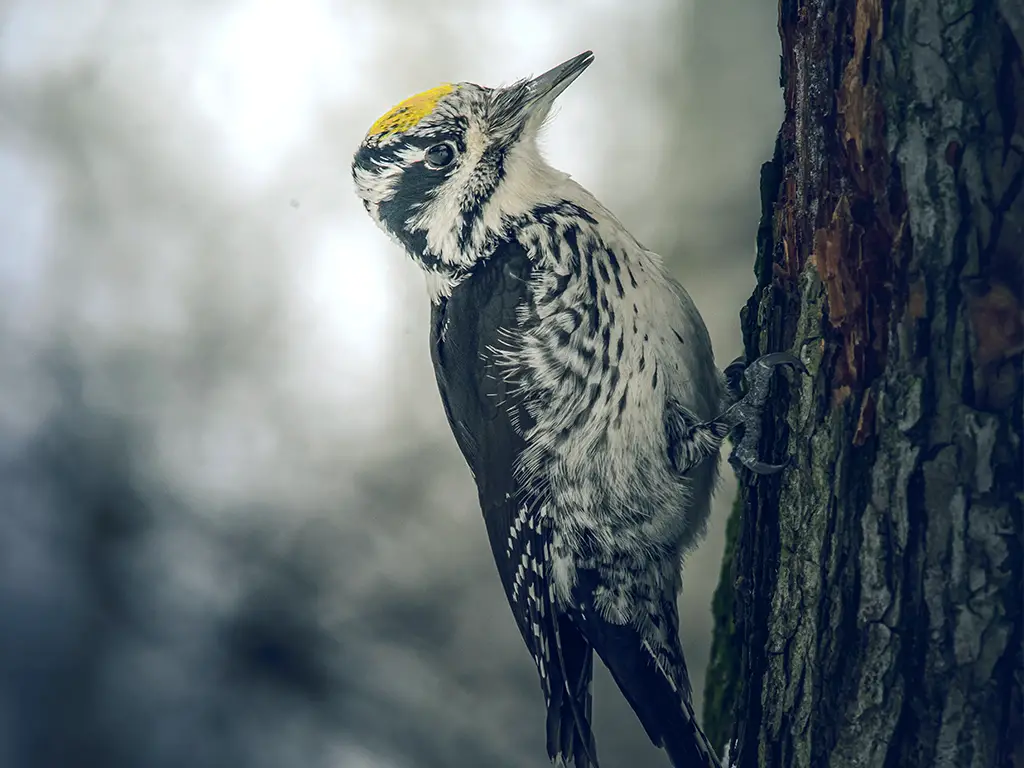
- Scientific name: Picoides dorsalis
- Size: 8-9 inches
- Weight: 2-3 ounces
- Food: Insects, especially wood-boring beetles
- Population: Stable
- Life span: Up to 11 years
- Status: Least concern
Adapted to coniferous forests, the American Three-toed Woodpecker is easily recognizable by having only three toes on each foot.
This woodpecker’s specialized foraging technique involves scaling off bark to access insects beneath. Found in spruce and fir-dominated forests, it plays a vital role in controlling insect populations.
With a stable population, this woodpecker contributes to the ecological balance in Nebraska’s coniferous habitats.
11. Acorn Woodpecker
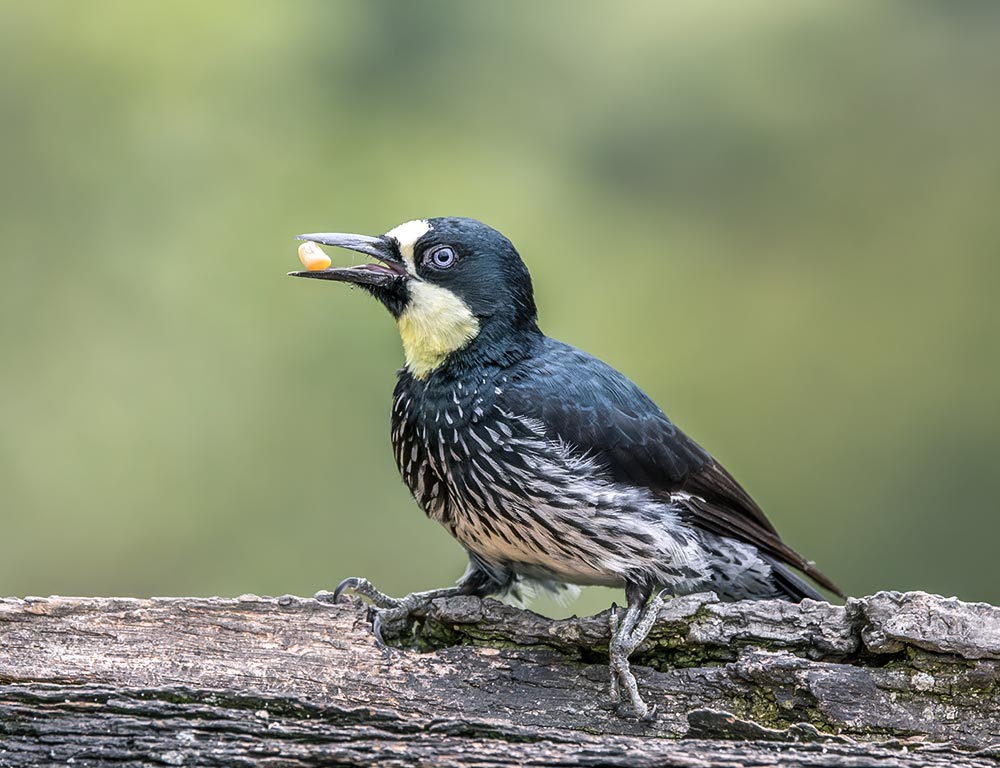
- Scientific name: Melanerpes formicivorus
- Size: 8.5-9.5 inches
- Weight: 3-6 ounces
- Food: Acorns, insects, and sap
- Population: Stable
- Life span: Up to 17 years
- Status: Least concern
Known for its unique communal living and acorn storage habits, the Acorn Woodpecker is a social and vocal species in Nebraska.
Often found in oak-dominated woodlands, this woodpecker creates granaries by storing acorns in tree crevices. The communal living structure involves multiple individuals contributing to food storage and nest defense.
With a stable population, the Acorn Woodpecker adds a touch of complexity and social dynamics to Nebraska’s woodpecker community.
12. Black-backed Woodpecker
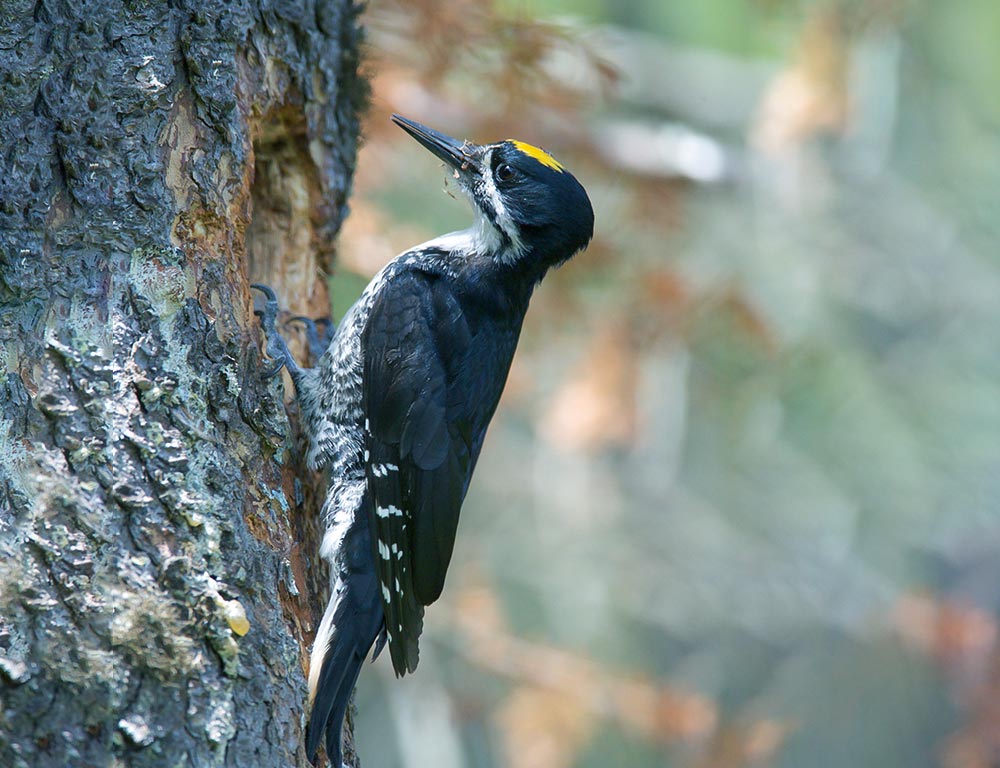
- Scientific name: Picoides arcticus
- Size: 9-10 inches
- Weight: 2-5 ounces
- Food: Insects, especially wood-boring beetles
- Population: Stable
- Life span: Up to 8 years
- Status: Least concern
Adapted to boreal and subalpine coniferous forests, the Black-backed Woodpecker is identified by its black back and white barring.
Thriving in areas affected by forest fires or insect outbreaks, it specializes in foraging for wood-boring beetles.
Known for its resilience and ability to exploit disturbed habitats, the Black-backed Woodpecker contributes to the ecosystem’s recovery.
With a stable population, it is an important and fascinating member of Nebraska’s woodpecker diversity.
Wrapping Up
In Nebraska, the Symphony of Woodpeckers paints a vivid picture of biodiversity.
From the resilient Downy to the captivating Williamson’s Sapsucker, these birds weave into the ecological fabric, contributing to a balanced and thriving ecosystem.
The woodlands and open spaces of Nebraska serve as a haven for these diverse species, showcasing nature’s adaptability and the coexistence of wildlife with human environments.
As we observe their behaviors, feeding habits, and unique characteristics, we gain a deeper appreciation for the intricate roles they play in maintaining the health of our ecosystems.
Nebraska’s woodpeckers, with their vibrant plumage and fascinating lifestyles, are not just birds; they are ambassadors of the state’s rich natural heritage. Thank you for being with us.